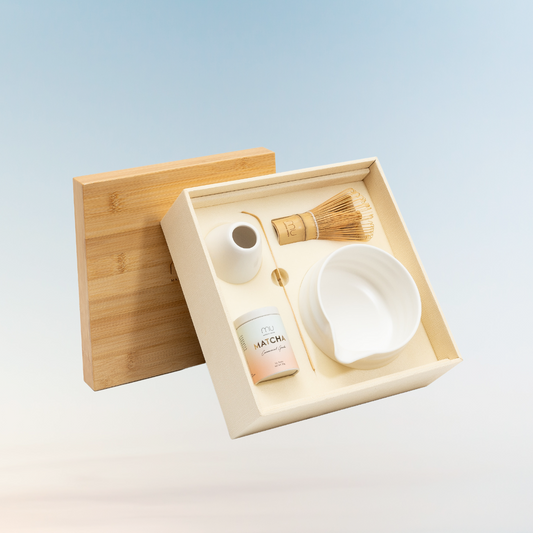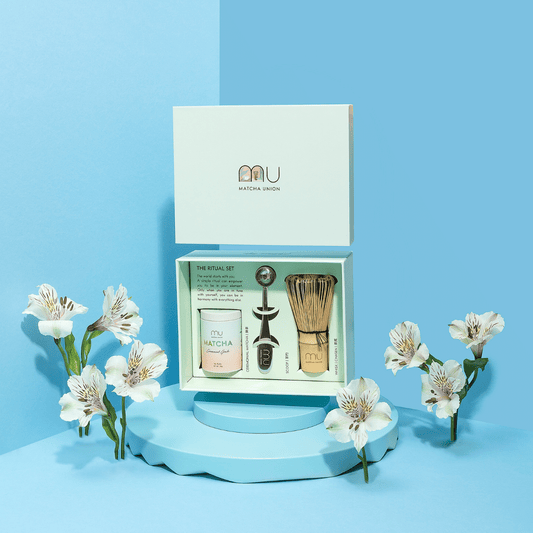
Koicha vs Usucha
Did you know that in Japan, matcha is traditionally prepared in two distinct ways - Koicha (濃い茶) and Usucha (薄茶)? Both methods have their roots in the ancient Japanese tea ceremony, but differ in terms of flavors, preparation techniques, occasions, and other important factors. By familiarizing yourself with the differences between these two approaches, you can enhance your matcha-making experience and gain a deeper appreciation for this beloved Japanese beverage!
Let's delve into the various facets of preparing matcha, starting with the preparation method, which forms the crux of achieving a perfect brew. Below are the notable differences between Koicha and Usucha:
- Preparation Method
Usucha: Whisked with more water to create a thin, frothy consistency.
Koicha: Mixed with less water to achieve a thick paste-like consistency.
- Tea-to-Water Ratio
The tea-to-water ratio is a crucial factor in determining the flavor and consistency of matcha.
Usucha: Typically prepared using 1 teaspoon of matcha per 70-100 ml of water.
Koicha: Typically prepared using 1.5-2 teaspoons of matcha per 30 ml of water.
- Whisking Technique
The whisking process is an exciting part of matcha-making that contributes to the ultimate taste and texture.
Usucha: Requires quick, vigorous whisking in a "W" or "M" motion to create foam.
Koicha: Requires slow, gentle stirring or kneading to create a smooth paste.
- Flavour
The flavour profile is one of the most significant differences between Koicha and Usucha.
Usucha: Light, refreshing, and slightly bitter.
Koicha: Rich, creamy, and intense umami flavour.
- Serving Style
The serving style differs between Usucha and Koicha.
Usucha: Typically served in larger bowls (chawan).
Koicha: Usually served in smaller bowls (chawan).
- Occasions
The traditional Japanese tea ceremony dictates specific occasions for consuming each type of matcha.
Usucha: Consumed as an everyday tea.
Koicha: Reserved for special occasions or experienced matcha drinkers.
- Grade of Matcha
The grade of matcha powder used is critical to achieving an authentic taste.
Usucha: Lower grade matcha (usually culinary grade).
Koicha: Higher grade matcha (usually ceremonial grade).
- Amount Consumed
The quantity of matcha consumed differs between Koicha and Usucha.
Usucha: Larger quantity consumed. Can be enjoyed as is or added to milk of your choice for a latte.
Koicha: Smaller quantity consumed. Intended to be enjoyed as is, without any added water or milk.
- Drinking Experience
The drinking experience is unique for each type of matcha.
Usucha: Sipped quickly and appreciated for its invigorating qualities.
Koicha: Sipped slowly and savored for its complex flavors.
- Cost
There is a difference in cost between Usucha and Koicha.
Usucha: Relatively more affordable.
Koicha: Relatively more expensive.
- Color
The color of the matcha tea is also an apparent distinguishing feature.
Usucha: Lighter green color.
Koicha: Darker, vibrant green color.
As you learn about the differences between koicha and usucha, you may be surprised by just how distinct these two matcha preparations are. The process of preparing matcha is a complex and nuanced one, requiring the memorization and implementation of a number of steps to achieve perfection. Every step is approached with meticulous care and attention to detail, ensuring that guests are treated to an exceptional and unforgettable experience. As you continue to explore the art of matcha preparation, you will discover the profound depth and fascination of this ancient and revered tradition.





